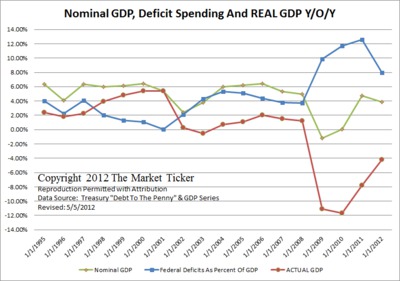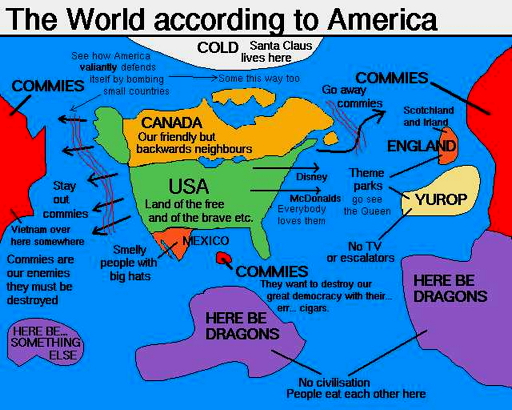

| Visitors Now: | |
| Total Visits: | |
| Total Stories: |

| Story Views | |
| Now: | |
| Last Hour: | |
| Last 24 Hours: | |
| Total: | |
Karl Denninger, “The Foreign Policy Dilemma”
by Karl Denninger
“The front page of Fox News this morning is trumpeting a story about both Obama and Romney “taking a break” from campaigning to brush up on foreign policy ahead of tomorrow’s debate in Boca Raton. Foreign policy is, and should always be, a major part of Presidential politics. It was thrust into the center of the stage this time around by events in Benghazi, where a group of militants stormed a US Consulate and killed four, including the ambassador. Initial characterizations by the Administration of this attack being an “organic” protest over a Youtube video that insulted Islam were later proved to be knowingly false, leaving the odor of a cover-up related to consulate security (or the lack thereof) under Hillary Clinton’s wandering eyes while calling into question Obama’s judgment related to the threat that radical Islamic factions pose to our diplomats in foreign lands.
But Romney is by no means “Mr Clean Hands” in this regard. He has, as many Republicans commonly do, wrapped himself in the Israeli flag during the campaign, calling into legitimate question whether he is attempting to use empathy (or more) for Israel among the voting population (a very significant voting block) as a differentiating factor – and whether he would do so post-election, rather than evaluate events on the ground against American interests.
Most-damning, neither candidate has linked our foreign policy, and its costs, with the actual driving force behind it – foreign energy access. As with health care we are once again being played for rubes and sold down the river. We are conveniently and consistently told that we must “fix Medicare and Social Security” (note how the two are linked together) while Medicaid is barely whispered about.
Yet the largest pieces of government spending in FY 2012 were Defense (25%), Health Care (23%) and Pensions (Social Security, at 22%.) Welfare is next at 12% and Interest is 6%. That’s 88% of all Federal Spending; Education, which both candidates screamed about mightily in the last debate, with both pushing more cheap loans at college students, consumes a mere 3% of the budget. So why are we talking about any of these other issues? Protection, Transportation, Education, General Government (e.g. the light bill in the White House) and other spending are each 4% or less of what the government does. What matters is what matters most, not what matters least.
The debates should be almost-exclusively about Defense, Health Care, Pensions and Welfare, in that order. That’s nearly 90% of what the government does, and therefore 90% of what the government both takes and borrows. Speaking of which the deficit was claimed to be roughly $1.1 trillion last year fiscal year. I prefer to take the total figure of debt, since nobody borrows money they do not need to spend. Looked at that way the figure is $16.066 trillion (9/28/2012) less $14.790 trillion (9/30/2011) or $1.276 trillion; that is, 34% (approximately) of every dollar spent was not taxed first.
You or I would be instantly cut off by our credit card company were we to spend 34% more than we take in for more than a month or two. The Federal Government has been doing it sequentially for more than four years.
There are those who argue (the “MMT” folks) that this is not only proper but salutary to the economy. They’re liars and frauds. All economic matters come down to a balance sheet, and it’s not complicated to figure out. If you emit $1.276 trillion worth of credit into the economy backed by nothing more than a promise to work tomorrow then you dilute the existing stock of money and credit in the system by that exact same amount. GDP must by definition encompass this newly-emitted credit, since it is all spent in some form or fashion into the economy. But this emission, 8% of the economy, means that were GDP to expand at 8% in dollars it would in fact be flat in constant unit terms!
And what, pray tell, has been the history on this?
The 1990s weren’t all that great, other than the last three of those years, which saw real progress driven by falling government deficits. That is, the economy was able to make progress because, not in spite of, the government aligning tax receipts with economic output. Since that time the economy has been an unmitigated disaster, no matter who has been in office.
We can’t solve problems until we honestly face them. The fact of the matter is that we cannot cut defense by any meaningful amount until we resolve our energy issues. This can be done using today’s technology, but it cannot be accomplished by sticking straws into the ground in other than a fleeting and futile fashion, Mitt Romney’s proclamations notwithstanding.
An article from the weekend shows a glint of recognition – but only a glint. “A small British company has produced the first “petrol from air” using a revolutionary technology that promises to solve the energy crisis as well as helping to curb global warming by removing carbon dioxide from the atmosphere. Air Fuel Synthesis in Stockton-on-Tees has produced five litres of petrol since August when it switched on a small refinery that manufactures gasoline from carbon dioxide and water vapour.”
There’s nothing complicated here. As I pointed out in “Leverage” (and in myraid articles on The Ticker before and since) CO2 is distilled out of the air for industrial purposes; that’s how it’s commercially produced. Water vapor in the air is easily condensed out as well, never mind that there’s a lot of liquid water (albeit most of it is salty, and the salt must be removed by distillation.) Hydrocarbons are simply that – hydrogen and carbon in chains. We know how to reassemble those atoms into the longer chains that result in liquid versions of hydrogen and carbon; the Germans figured this out and used it to provide fuel to their tanks and planes during WWII.
The issue is always about the base energy required; oil is simply a battery, having stored the energy from the sun over millions of years’ time. We dig it up and release that energy. We use liquid hydrocarbons for fuel because they are very energy-dense. Drive your car however far it moves on one gallon of gasoline and then push it home with your muscles in the opposite direction and tell me all about how this is “no big deal” and we can “replace that with batteries” – or beasts. Sorry, but no.
There is no “free lunch” but there are ways to cheat. E = mc^2 is one of the few that actually works. It “works” because “c”, the speed of light, is so large and c ^ 2 is very large. Therefore, very small amounts of “m” (matter) can be exchanged for very large amounts of “E” (energy.)
So-called “conventional” nuclear energy makes a lot of heat but it does so at a low quality level. This in turn led the scientists in the UK to use electricity, which is very high-quality energy, to drive their process. But electricity is expensive because it is high-quality and creating it from lower-quality energy (such as conventional nuclear power) is very wasteful; only about 1/3rd of the heat produced in a nuclear reactor comes out the other end as electricity.
The key to the puzzle is this – there are nuclear technologies that produce much higher quality heat – heat that is suitable for direct use in driving such a reaction as these scientists are working with. In doing so the cost would drop by a factor of nearly three to one. In other words, take a 650C process heat stream (from a LFTR reactor) and use it to directly drive fuel-from-CO2 and water reactions without going through electrical generation first. It turns out that Fischer-Tropsch, which is the process the Germans figured out to combine carbon and hydrogen into long-chain fuels, requires a temperature of about 350C, which is conveniently less than what a LFTR operates at.
So why isn’t this a centerpiece of our political campaigns – an actual solution to our energy problem and thus our foreign policy entanglements? Note that not only are the mainstream political candidates not talking about this neither are the third parties. There are two possible answers to this dilemma – either they don’t understand it; neither they or their advisors have the first clue about physics, chemistry and basic arithemtic or they’re not interested in solving these problems at all, because they expect to derive some sort of benefit from continuing to allow them to fester and consume our economy.
The same applies to Health Care. It’s not talked about because resolving this problem means removing the political special favors the entire medical industry has used and abused to financially rape the public with for the last three decades. Putting a stop to that removes more than $400 billion a year in government spending, or roughly one third of the deficit – all on its own! But that deficit spending immediately comes out of the economy and the hides of the companies profiting from screwing the public, just as does the military spending that makes possible our “energy deficit.”
Between these two, were we to resolve them, we would cut the deficit down to under $400 billion without making a single change to tax rates or other government programs. If we then restored the Payroll Tax to its former level half of the remaining $400 billion in deficits ($214.2 billion) would disappear, leaving us with less than a $200 billion deficit. Now index Social Security retirement to longevity and you’re within spitting distance (~$100 billion or so) of a balanced budget.
Note that I didn’t fix the offshoring of jobs or any of the other gross imbalances that our government has put forward and continually exacerbated yet. Nor did I raise taxes on anyone other than restoring the former Payroll Tax rates; the Bush Tax Cuts remain as they are. And while both of those changes would cause a short-term rise in unemployment as jobs were lost the imputed “tax” on production from outrageously-high health care and defense spending that is actually a disguised tax on energy would disappear too. Shortly thereafter those lost jobs would come back as American competitiveness on a labor-dollar basis would surge by roughly 10%!
There are no honest Presidential political candidates on the stage – whether Democrat, Republican, or third party – when it comes to either foreign or domestic policy in this election cycle. It’s clear that we can solve the problems we face in this country, but we’re willfully and intentionally refusing as citizens, and thus we deserve what we’re going to shortly receive.”
2012-10-21 17:43:11
Source:





